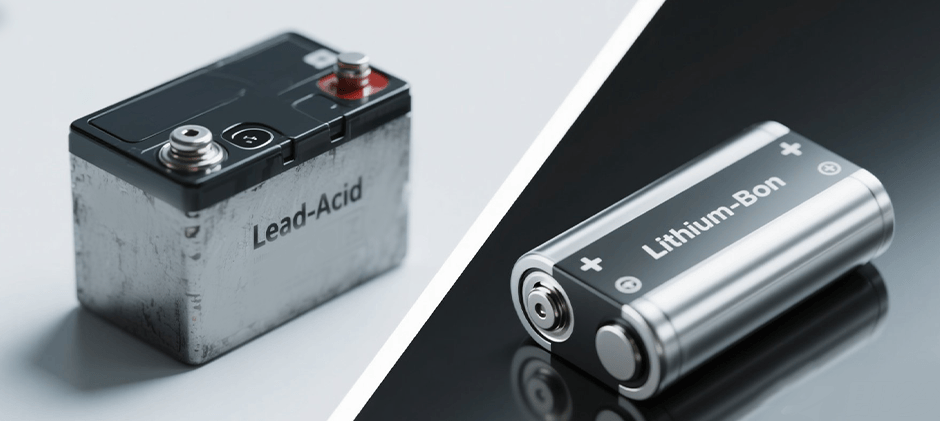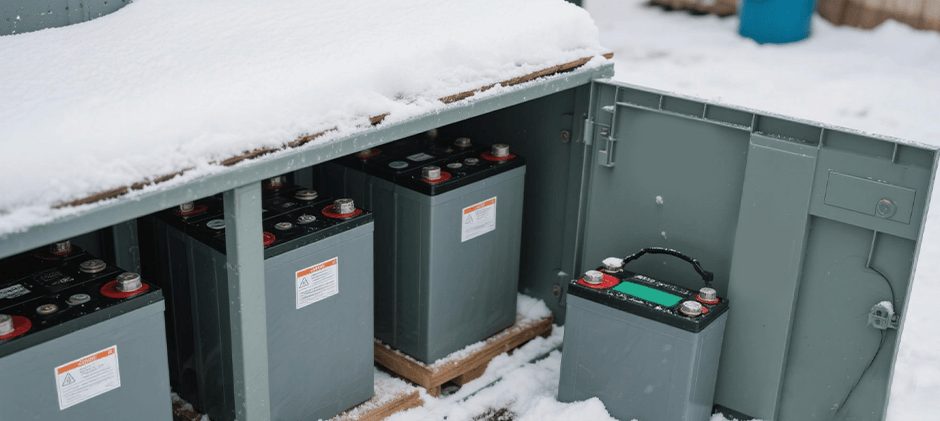How long does a mower battery last? In general, your mower battery could last at least 4-5 years, but the specific time could vary for different types of batteries, and if you take your machine care enough, the battery could last longer than you may expect. Maintaining your lawn requires reliable equipment, and understanding battery lifespan is crucial for uninterrupted mowing. Whether you own a riding mower or a cordless electric model, among all the mower parts, knowing how long your lawn mower battery will last helps you plan maintenance and replacements effectively.
Different Types of Lawn Mower Batteries and Their Lifespans

Lead-Acid Batteries (Traditional Riding Mowers)
The 12-volt lead-acid batteries found in most riding lawn mowers typically last between 3-5 years with proper maintenance. These are similar to car batteries but are designed for the specific demands of lawn equipment.
Factors affecting lead-acid battery life include:
- Frequency of use
- Proper charging habits
- Storage conditions
- Temperature extremes
- Vibration exposure
Lithium-Ion Batteries (Cordless Electric Mowers)
Modern cordless electric mowers use lithium-ion batteries, which offer different performance characteristics:
| Battery Type | Average Lifespan | Charge Cycles | Runtime Per Charge |
|---|---|---|---|
| Lead-Acid | 3-5 years | 200-300 | Continuous operation |
| Lithium-Ion (40V) | 5-7 years | 500-1000 | 30-60 minutes |
| Lithium-Ion (80V) | 5-8 years | 500-1000 | 60-90 minutes |
Lithium-ion batteries generally last longer than lead-acid versions, with most providing 500-1000 charge cycles before significant capacity loss. This typically translates to 5-7 years of regular use.
Signs Your Lawn Mower Battery Is Failing
Watch for these indicators that your battery replacement may be needed:
1. Difficulty Starting the Mower
One of the first things you might notice is trouble getting your mower started. Essentially, the battery provides the necessary jolt to crank the engine or power the electric motor. So, if the battery is getting weak, it might not have enough power to turn the starter motor quickly and strongly. Instead, you might hear a slow, sluggish cranking sound, or perhaps just a clicking noise without the engine turning over at all. Sometimes, it might take several attempts to finally get it going, or it might refuse to start completely.
2. Shorter Runtime Between Charges
Additionally, pay attention to how long the mower runs on a single charge compared to before. A healthy, fully charged battery should allow you to mow for a predictable amount of time. However, as batteries age and go through many charge-and-discharge cycles, their total energy storage capacity naturally decreases. This means you might find yourself unable to finish mowing the entire lawn on one charge like you used to, even when the grass conditions haven’t changed. The battery simply doesn’t seem to last as long between charges anymore.
3. Longer Charging Time than When New
Another tell-tale sign is when the battery starts taking noticeably longer to recharge than it did when it was new. A good battery accepts a charge efficiently within the expected timeframe specified by the manufacturer. But as a battery wears down internally, its internal resistance can increase, making it harder for the charger to push electricity back into it. Consequently, you’ll observe the charging process dragging on much longer than usual. In some situations, a severely worn-out battery might never even indicate that it has reached a full charge.
4. Physical Damage (Bulging, Leaking)
Furthermore, it’s always a good idea to visually inspect the battery itself for any physical damage. Obvious issues like bulging sides or leaking fluid are clear red flags. Bulging typically happens when internal problems, such as overheating, overcharging, or chemical breakdown, cause gases to build up inside the battery case, distorting its shape. Leaking, on the other hand, indicates that the casing is cracked or the seals have failed, allowing the corrosive electrolyte liquid inside to seep out. Both bulging and leaking point to serious internal failure and can potentially be a safety hazard, requiring immediate replacement.
5. The Battery won’t Hold a Charge Overnight
Finally, consider if the battery struggles to hold its charge even when not in use, for example, overnight. While all batteries naturally lose a tiny bit of charge over time through a process called self-discharge, a failing battery often loses its charge much more rapidly. This usually happens because of internal issues like developing short circuits or material degradation, which cause the stored energy to drain away quickly even when the mower is off. For instance, you might fully charge the battery, disconnect it or leave it in the mower overnight, only to find it’s significantly drained or completely dead the next day, unable to provide enough power to start the mower.
How to Expand Your Lawn Mower Battery Life
Proper battery maintenance can significantly extend lifespan:
For Lead-Acid Batteries:
- Maintain proper charge levels – Avoid complete discharge
- Clean battery terminals regularly to prevent corrosion
- Check electrolyte levels in non-sealed batteries
- Store properly during off-season – Keep in a cool, dry place
- Use a trickle charger for winter storage
For Lithium-Ion Batteries:
- Avoid extreme temperatures during use and storage
- Don’t store fully discharged – Aim for 40-60% charge during long-term storage
- Use manufacturer-recommended chargers only
- Allow cooling before charging after use
- Avoid frequent partial charges when possible
How Weather Affects Battery Life

Cold weather impact on batteries is significant and often overlooked:
- Temperatures below 32°F (0°C) can reduce battery capacity by 20-50%
- Battery discharge rate increases in cold conditions
- Heat accelerates chemical degradation inside batteries
Runtime Per Charge: What to Expect
For cordless electric mowers with lithium-ion batteries:
- 40V batteries: 30-45 minutes of runtime (sufficient for 1/4 to 1/3 acre)
- 80V batteries: 60-90 minutes of runtime (sufficient for 1/2 to 3/4 acre)
- Dual battery systems: Up to 2 hours of continuous use
Battery runtime decreases gradually over the battery’s life, losing roughly 20% capacity after 500 charge cycles.
When to Replace Your Lawn Mower Battery
Consider replacement when:
- Your lead-acid battery is more than 4-5 years old
- Your lithium-ion battery shows significant capacity reduction (more than 30%)
- The mower struggles to start consistently
- Charging time has increased dramatically
- Runtime between charges has decreased significantly
Conclusion
The average lawn mower battery lifespan ranges from 3-5 years for lead-acid batteries and 5-7 years for lithium-ion models. Proper maintenance, appropriate storage, and understanding usage patterns can help maximize battery life. At Fridayparts, we stock high-quality mower replacement parts for all major lawn mower brands at affordable prices. Our vast inventory ensures compatibility with your equipment, allowing you to keep your lawn in pristine condition with the most cost-effective solutions. Contact us today to find the perfect battery solution for your lawn care needs!
